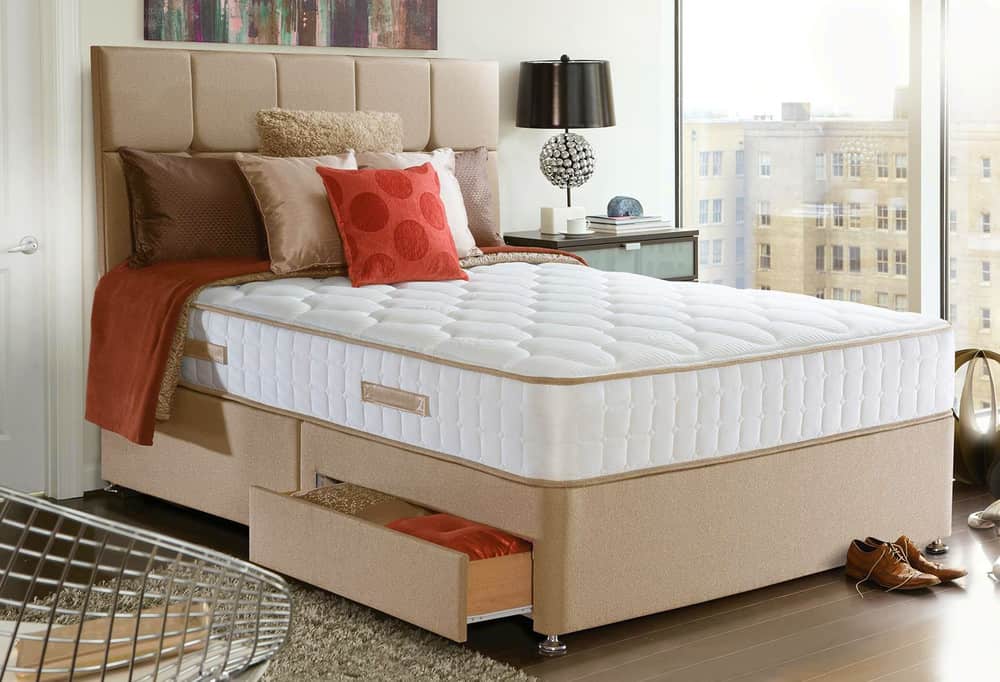It’s critical to pick a mattress that’s right for you because you spend around one-third of your life sleeping. What sleeping position you like and how much money you’re ready to spend are just a few of the factors that might influence which mattress is ideal for you. Mattresses are classified in to nine types: innerspring, foam, hybrid, pillow top, latex, gel, enclosed coil, airbed, and adjustable bed. The benefits and drawbacks of each mattress type are detailed below to assist you to determine which type to seek.
Innerspring
A spring mattress is constructed with a mix of metal coils or springs and soft layers of cloth. There are four varieties of coils: continuous, offset, pocket, and Bonnell, each of which provides varying amounts of back and body support. The more coils there are, the better the quality and comfort.
Pros: Affordable, Breathable, sturdy and durable as it is made up of metal springs
Cons: The weight, Motion Transfer, Noise
Foam Mattresses
Soft polyurethane or polyol foam is used to make foam mattresses. Because of the suppleness of the foam, these mattresses mold and support the back and body. Memory foam is popular because it gives the sensation of being cradled. It’s perfect for side sleepers and those suffering from uncomfortable ailments who desire more gentleness.
Pros: Cost, Comfort, No Noise, Helps relieve back pain
Cons: Heavy, Not waterproof
Latex
If you want a natural sleeping option, search for natural latex rather than synthetic latex. Latex mattresses are comparable to foam mattresses in that they curve and relieve pressure points, but they are firmer, more bouncy, and sleep cooler. Latex mattresses are classified into two types: Dunlop and Talalay. The Talalay Process is used because it is more permeable, allowing for cooler sleep.
Pros: Natural Material, Pain relief, Bounce Breathability
Cons: Costlier, Difficult to move, Initial Odor
Airbed Mattress
Airbed mattresses contain a chamber that can be filled with varying amounts of air. When the amount of air is reduced, the pressure lowers and the surface gets softer. Several foam layers are often found above the air chambers. The air chamber offers adjustable support, while the foam layers offer comfort and pressure relief.
Pros: Split side option, comfort, good for injuries, customizable support
Cons: Because of the technology required to make high-quality adjustable air chambers, airbeds are one of the more expensive solutions available.
Hybrid
There are a variety of advantages to combining innerspring with foam. Innerspring mattresses with a memory foam layer, as well as those with numerous types of foam, latex + foam, and others, are common examples. A hybrid is created by combining two materials or technology to create something new. Boysenberries, for example, are created when blackberries and raspberries meet.
Pros: Versatility, Advanced Support, Variety
Cons: Heavy, Expensive
A fast web search for the mattress will provide several results, including hybrid, coir mattress, orthopedic mattress, foam mattress, cotton mattress, and spring mattress, among others. You may select the ideal one depending on the benefits and downsides as well as your specific requirements. Visit Chiropedic to learn more about the many types of mattresses and how you can start sleeping better right away! We prioritize your sleep.



